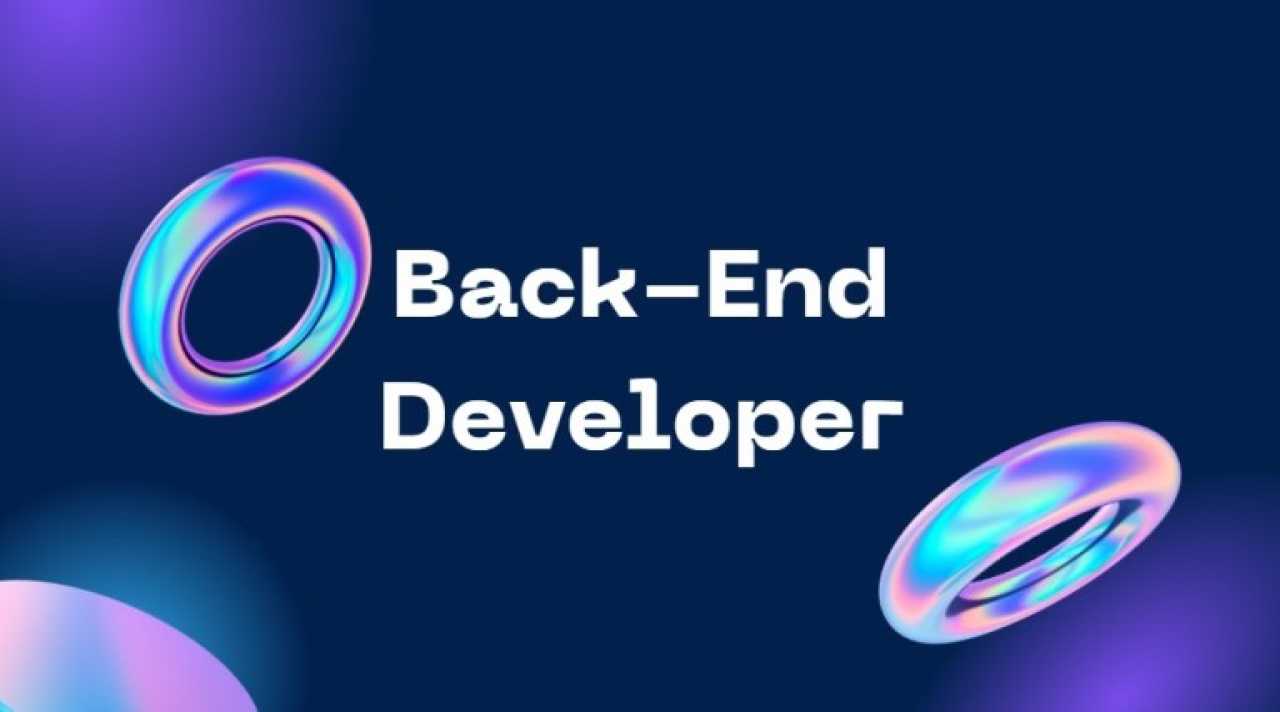Roadmap To Become A Backend Developer For Beginners

In our modern technology-driven world, the need for proficient backend developers has risen dramatically. As products and services increasingly depend on online platforms, it's crucial to keep pace with the latest tools and technologies to thrive in this rapidly growing domain of backend development. The shift of businesses towards online operations aid the demand for skilled backend developers, highlighting the significance of a clearly defined path for individuals aspiring to excel in this field.
This dynamic landscape not only underscores the value of adaptability and continuous learning but also celebrates human invention and originality. It is within this evolving space that individuals have the opportunity to craft innovative solutions, pushing the boundaries of what is possible in backend development. The fusion of human creativity with technological advancements paves the way for groundbreaking contributions, shaping the digital landscape of tomorrow.
What is Backend Development?
Backend development contains server-side programming that forms the foundation of a web application's functionality and business logic. It plays crucial tasks such as user authentication, data storage, and server configuration. Backend developers leverage programming languages like Java, Python, Ruby, or PHP, coupled with frameworks like Node.js or Ruby on Rails, to design and implement the logic of web applications. Additionally, they cooperate closely with front-end developers to ensure seamless integration of the user interface and functionalities.
Back-end developers are the experts who build and maintain the mechanisms that process data and perform actions on websites. Unlike front-end developers, who control everything you can see on a website, back-end developers are involved in data storage, security, and other server-side functions that you cannot see.
The Three Pillars of Backend
1. Database: Database is an important component, it provides an efficient and structured means of storing information, as opposed to conventional text files.
READ ALSO » Top 10 Best CSS Framework For Front-End Developer
2. Server: Serving as a computational entity, the server responds to user requests initiated through the front-end interface, producing results calculated by the program.
3. Application: This software monitors the server for requests, accesses the database for data, and responds to those requests through the server.
Roadmap To Become A Backend Developer For Beginners
1. Establish a Strong Foundation
Before going into backend development, a solid understanding of fundamental computer science principles such as data structures, algorithms, and object-oriented programming is crucial. This foundational knowledge forms the bedrock upon which advanced backend concepts are built.
2. Master Internet, OS, and Frontend Basics
Backend developers must possess a comprehensive understanding of the internet's functioning, browser usage, DNS workings, and protocols like HTTP and HTTPS. Familiarity with operating systems is also important, encompassing knowledge of terminal commands, threading, concurrency, I/O management, and more.
3. Acquire Proficiency in Programming Languages
Backend developers should be adept in programming languages to harness their coding prowess. While Java is frequently recommended, languages like Ruby, Javascript, Python, C#, and PHP also holds significant relevance in programming.
4. Embrace Backend Frameworks
Backend development frameworks are indispensable tools that facilitate the creation of reusable templates and code, thereby enhancing programming efficiency. Notable frameworks include Microsoft’s ASP.NET, Laravel, Rails (Ruby on Rails), Django, Node.js, and Spring Boot.
5. Prioritize Web Security
Understanding the potential risks and vulnerabilities faced by online applications is crucial. Proficiency of secure coding practices, encryption techniques, authentication, and authorization mechanisms empowers web developers to safeguard user data and construct reliable web applications.
6. Familiarize with Version Control Systems (VCS)
READ ALSO » JS101: A Beginners Guide To Javascript
Version Control Systems enable developers to manage and track changes made to their source code over time. Popular VCS tools like Git, Subversion, Mercurial, and Perforce facilitate collaborative work, reduce code conflicts, and maintain codebase integrity.
7. Understanding Fundamental Backend Concepts
Adept backend developers must comprehend core concepts such as Databases, APIs, Caching, Testing, Code Analysis Tools, Architectural Patterns, Message Broker, Containerization, Design Patterns, Authentication Method, Webhook, and Websocket, laying the groundwork for creating complex applications.
8. Apply Knowledge in Real-World Scenarios
Practical application of backend development skills through straightforward tasks and projects is instrumental in reinforcing understanding and proficiency in various tools and technologies.
9. Engage in Internships
Internships provide invaluable opportunities to network with industry professionals, gain hands-on experience, and learn from seasoned developers. Active involvement in real projects fosters skill refinement and exposes individuals to numerous technologies and practices.
In conclusion, as cloud computing and the Internet of Things continue to evolve, the demand for proficient backend developers is poised to remain robust. To thrive in this dynamic landscape, staying up-to-date on emerging technologies, programming languages, and frameworks is paramount. By following this comprehensive roadmap, aspiring backend developers can chart a course towards a successful and rewarding career in 2023 and beyond.
